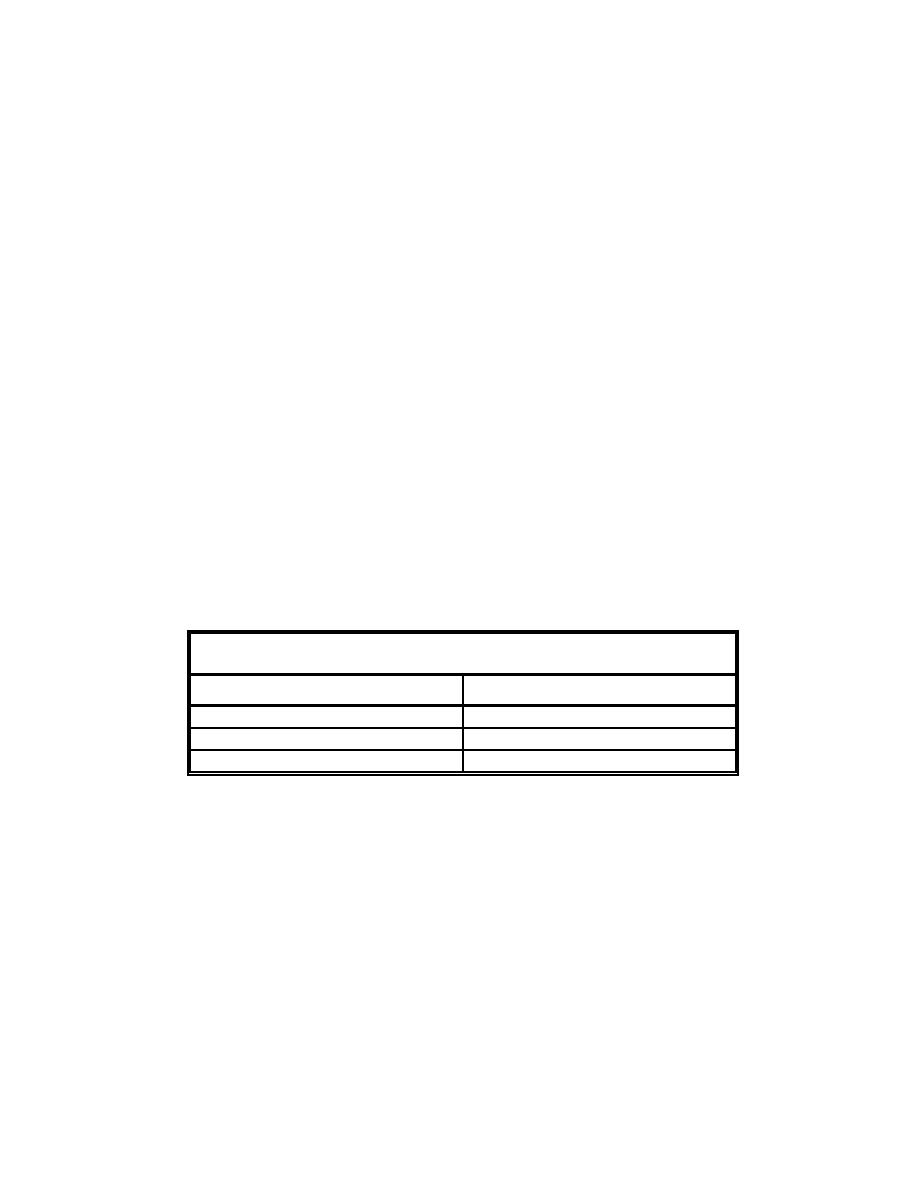
An overtopping rate time series was computed for each of the three calibra-
tion storms acting on the existing profiles. The berm reduction factor was deter-
mined as recommended by VJ. Since most existing profiles do not have a berm,
this factor affected only a small number of profiles. The reduction factor for
influence of a shallow foreshore was initially set equal to one. The reef presence
suggests that a value less than one could be more appropriate, but behavior of
waves over a reef during intense typhoon winds is not well documented. The
reduction factor for influence of roughness was initially set equal to one. The
presence of rubble on the shore suggests that a value less than one may be
applicable, but the overall roughness impact of the rubble is unknown. The
reduction factor for influence of angle of wave attack was set equal to one. This
value is appropriate since the long-period waves characteristic of intense
typhoons can be expected to approach nearly perpendicular to shore.
The range of maximum overtopping rates calculated for the 15 existing pro-
files during each of the three storms is given in Table 8. Overtopping rates for
Roy and Omar are significantly greater than the damage threshold overtopping
levels. For Koryn, overtopping rates are on the order of damage threshold levels
and substantially lower than for the other two storms. Since USAED, Pacific
Ocean (1995) reported similar impacts and similar tide levels for both Roy and
Koryn, the difference between calculated results for the two storms is larger than
would be expected. One factor which could impact calculations for Koryn is that
typhoon track data is specified with 0.1-deg and 6-hr accuracy. Koryn passed on
the east side of Guam, moving almost directly north. A small error or impreci-
sion in the east-west placement of the track could have a significant impact on
processes in the project area.
Table 8
Maximum Calculated Overtopping Rates for Calibration Storms
Range of Maximum Overtopping Rate
m3/sec/m (cfs per ft)
Typhoon
Roy (BWP0188)
0.00098 to 0.00519 (0.0105 to 0.0559)
Koryn (BWP0190)
0.00001 to 0.00007 (0.0001 to 0.0008)
Omar (BWP1592)
0.00135 to 0.01297 (0.0145 to 0.1396)
Since Koryn caused documented damage along the commercial port road and
calculated overtopping rates are around the threshold rates for damage, it was
decided to set the reduction factors for influence of shallow foreshore and rough-
ness to one for all applications with existing profiles.
For plan profiles, the reduction factor for influence of shallow foreshore was
set equal to one, as with existing profiles. However, the reduction factor for
influence of roughness will be affected by the planned addition of CORE-LOC
units to the nearshore profile. A roughness factor of 0.6 was taken for the Core-
Loc portion of the profile. The section of nearshore profile one significant wave
height above and below the swl was used to determine the reduction factor for
influence of roughness. Using a linear weighting, factors of 0.6 for Core-Loc
slope and 1.0 for other parts of the profile were combined to give the overall
41
Chapter 5
Development of Overtopping and Stage-Frequency Relationships



 Previous Page
Previous Page
